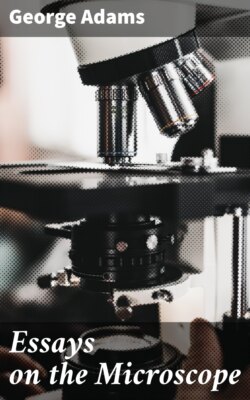Читать книгу Essays on the Microscope - George Comp Adams - Страница 53
На сайте Литреса книга снята с продажи.
DESCRIPTION OF LYONET’S ANATOMICAL MICROSCOPE. Plate VI. Fig. 3.
ОглавлениеTable of Contents
Fig. 3 represents the instrument with which M. Lyonet made his microscopical and wonderful dissection of the chenille de saule or caterpillar of the goat moth,[36] of which a specimen is given in Plate XII. Fig. 1, &c. of this work. This portable instrument needs no further recommendation. By it, other observers may be enabled to dissect insects in general with the same accuracy as M. Lyonet, and thus advance the knowledge of comparative anatomy, by which alone the characteristic, nature, and rank of animals, can be truly ascertained.
[36] Phalæna cossus. Linn. 63.
A B is the anatomical table, which is supported by the pillar O N; this is screwed on the mahogany foot, D C. The table A B, is prevented from turning round by means of two steady pins; in this table or board there is a hole, G, which is exactly over the center of the mirror, F E, that is to reflect the light on the object; the hole, G, is, designed to receive a flat or a concave glass, on which the objects are to be placed that you design to examine or dissect. R X Z is an arm formed of several balls and sockets, by which means it may be moved in every possible position; it is fixed to the board by means of the screw, H; the last arm, I Z, has a female screw, into which a magnifier may be screwed, as at Z. By means of the screw, H, a small motion may be occasionally given to the arm I Z, for adjusting the lens with accuracy to its focal distance from the object. Another chain of balls is sometimes used, carrying a lens to throw light upon the object; the mirror is also so mounted, as to be taken from its place at K, and fitted on a clamp, by which it may be fixed to any part of the table, A B.
